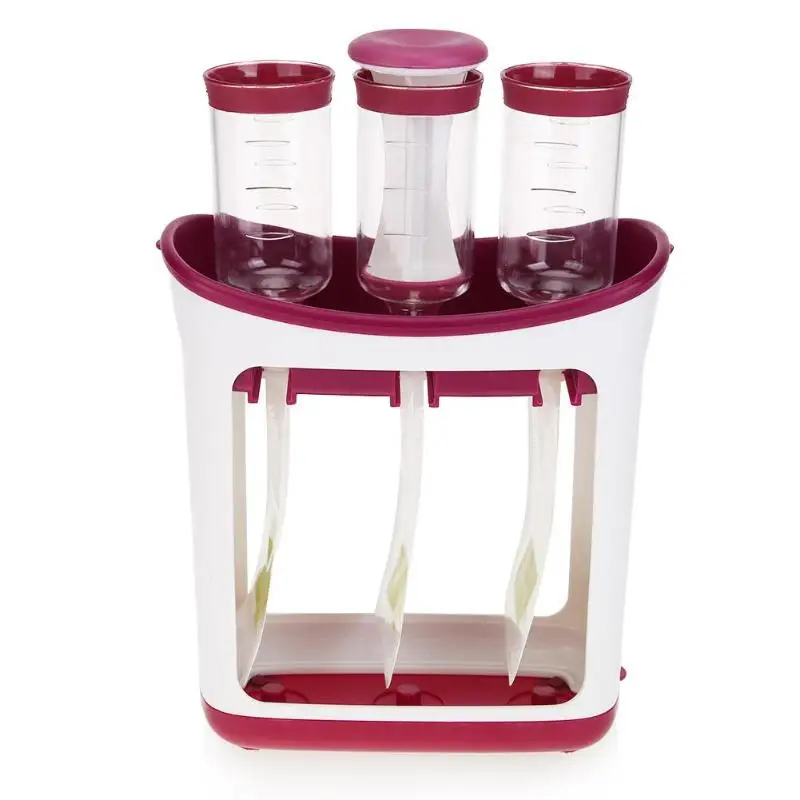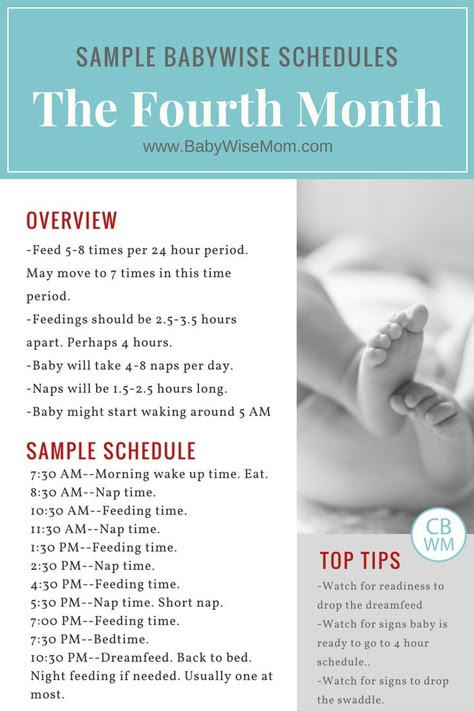Food schedule for 6 months old baby
6-month-old feeding schedule: Timetable
A baby’s 6-month birthday marks an important transition as many infants are ready to start trying solids at this point.
While breast milk or formula should still form the core of a 6-month-old’s diet, some caregivers find that a child’s feeding schedule shifts as they begin eating purees and other solids.
Share on PinterestWhen a baby reaches 6 months of age, purees and other solid foods can usually become part of their diet.Babies typically need to eat every 2–3 hours, five to six times during the day.
It is normal for a baby’s schedule to change from day to day, or for babies to eat different amounts of food each day.
Caregivers can follow a baby’s cues, even if they have established a schedule already. A parent or caregiver does not need to deny food to a baby just because it has already eaten.
Introducing solids
The American Academy of Pediatrics (AAP) advise that parents exclusively breastfeed infants for about 6 months if possible. By the time a baby hits their half birthday, they may be ready to try solids.
A baby may be ready for solids at 6 months if:
- they have good head control
- they can hold their head up for extended periods
- they can sit up with no or very little assistance
- they no longer have the tongue thrust reflect to push food out of the mouth with the tongue
- they show interest at mealtime and lean toward food if a caregiver offers it
At this age, breast milk or formula is still a baby’s most important form of nutrition and solids are an addition.
Not all 6-month-olds are ready for solids. If a baby shows no interest, a caregiver can wait a few weeks and try again.
Giving a baby 1–2 tablespoons of iron fortified cereal or fruit or vegetable purees per feeding can be a good place to start.
Gradually increasing this as the baby’s interest and appetite increase can follow.
To ensure a baby eats sufficient food, the adult can breastfeed or give a bottle before offering solids.
Caregivers can give solid food as a supplement each time they nurse the baby or give a bottle. Or, they can include the baby in family meals by giving solids at mealtime.
At 6 months of age, when an infant may begin to want solids, a caregiver can offer these just once per day.
Choosing a time of day when the caregiver is relaxed and not pressed for time, and the baby is not overly hungry, fussy, or tired often works best.
Once a baby is enjoying their once-a-day solids, the frequency can increase to two and then three times a day.
There is no “right” schedule, but caregivers should plan to increase the number of solids babies get gradually.
At 6 months, the goal is not to introduce new foods and eating habits. Similarly, there is no need to force a baby to eat solids or restrict new food if a baby indicates they want more.
Regardless of their size and eating habits, babies need access to an expanding variety of solid foods.
Most babies will need to try new foods several times before they feel comfortable eating them.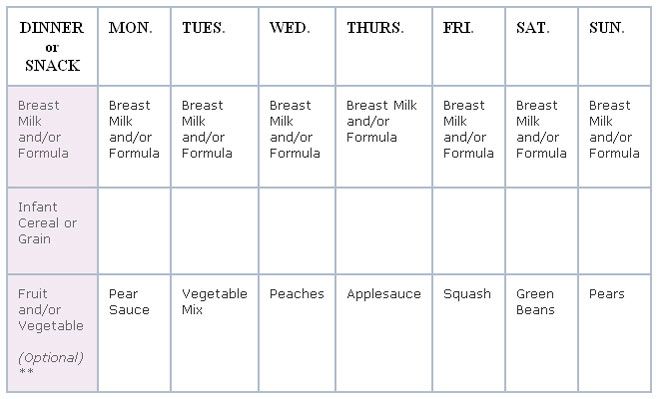 It is fine to let a child eat at their own pace, in the way that feels right to them.
It is fine to let a child eat at their own pace, in the way that feels right to them.
It is acceptable at this age for a baby to play with their food since this is a way of exploring new things.
Breast milk and formula
Breast milk or formula remains the most important food at 6 months of age. The easiest way to ensure a baby eats enough is to nurse or formula feed them on demand when they show signs of hunger.
Research supports the value of feeding on demand.
A longitudinal study of 10,419 children found better academic achievement and a four-point Intelligent Quotient (IQ) advantage at 8 years old among children whose caregivers fed them on demand.
However, the caregivers of these children got less sleep and had lower overall well-being.
These results may point to adults finding a happy medium, such as steadily shaping the baby’s preferred schedule into one that works for them.
In general, caregivers should plan to breastfeed babies 3 to 5 times per day, and sometimes more. However, babies vary greatly and every 3–4 hours is common, which can amount to up to eight times in 24 hours.
However, babies vary greatly and every 3–4 hours is common, which can amount to up to eight times in 24 hours.
Some babies prefer cluster feedings, during which they nurse several times in a short period. Growing or sick babies may also nurse more frequently.
If a baby has formula, giving 24–32 ounces of iron fortified formula spread over five or six feeds per day is typical. While some babies sleep through the night at 6 months, others will still wake or want to feed.
A nighttime “dream feed” around the time caregivers retire for the evening may help babies sleep longer.
Other liquids
Babies do not need juice at 6 months. The extra calories can decrease a baby’s appetite, and the sugar may damage a child’s developing teeth. Soda and other drinks are not healthful for babies.
Babies can have water beginning at 6 months, or when caregivers introduce solids, whichever is later. Introducing a cup of water along with solid meals may be helpful.
Around 6 months old, some babies begin transitioning from three or four daily naps to two. The baby might take a midmorning nap and a midafternoon nap. At this age, most babies need 12–15 hours of sleep per day, and naps usually last 1–3 hours.
The baby might take a midmorning nap and a midafternoon nap. At this age, most babies need 12–15 hours of sleep per day, and naps usually last 1–3 hours.
Caregivers are best finding a schedule that works for them and the child. Some children are used to falling asleep by nursing or with a bottle. Others happily doze off on their own.
A caregiver can follow the baby’s cues and work to adapt their needs to the family’s schedule slowly.
These feeding tips may help:
- Babies may be hungrier after waking from a long nap. This can be a good time to try solids after offering formula or breast milk to ease their initial hunger.
- There is no evidence that adding cereal to a bottle helps babies sleep longer. Doing so can increase their risk of choking.
- Babies must never have food without close supervision. nor have solids, even very thin purees, in bed.
Deciding what, when, and how to feed a baby can be challenging, especially during the transition to solids. As long as babies get regular breast milk or formula, caregivers do not need to rush the transition to solids or worry that babies are not eating enough.
As long as babies get regular breast milk or formula, caregivers do not need to rush the transition to solids or worry that babies are not eating enough.
Some babies take longer than others to embrace solids, while some will eagerly eat anything. The right schedule is one that works for the baby and family. This schedule may change over time which is also fine.
7 Month Old Feeding Schedule with Free Printable
Get a printable 6 month old feeding schedule with helpful tips to use and adjust for your baby through the end of their 7th month. And, grab some bonus feeding tips that will help you safely and confidently feed your baby!
Affiliate links are used below. See our full disclosure.
I know how fast the first year goes as a mother of three, but I am still in disbelief that my baby just turned 8 months! Feeding each of my three babies have been completely different experiences, as they are all unique little beings. James (the 8-month old) is loving meal times and is quite an eater, for now anyways.
James (the 8-month old) is loving meal times and is quite an eater, for now anyways.
I think part of his success in eating has been due to the 6 month feeding schedule I’ve had him on since he started traditional home-made baby food at 5.5 months. Read about how I, as a licensed occupational therapist introduced baby food for the first time if you’re looking for some tips and tricks.
*These 6 and 7 month old feeding schedules are also the ones I’ve recommended to the families I work with as a licensed occupational therapist that specializes in feeding babies and children.
As we begin this 8th month, I can see our schedule evolving, and I thought it might be helpful if I shared how I created his feeding schedule for 6 months old through 7 months old.
During these last two months, I’ve reflected a lot on how much James is benefiting from slipping into an already very established eating routine (there are some benefits to being the third child!).
Whether it is your first, second, or even third child, it can be challenging to make this transition from just bottle feedings to breast or bottle feedings AND baby food especially because every child is different.
In my experience, parents often have a lot of questions about how to set up these routines. While I think there is value in that, this schedule is not a hard and fast rule for every baby.
We all know that every baby is unique, but as parents, it’s hard not to compare. Try to avoid playing the comparison game with these feeding milestones, as long as you’re giving lots of positive opportunities for interactions with food.
I should also note that James is breastfed, and only takes an occasional bottle when I’m away from the house (find help for getting a breastfed baby to take a bottle). However, he doesn’t eat frequently like some nursing babies do. If your baby has lots of mini meals, this 6 month old eating schedule may look a little different.
It’s meant to be a guideline to starting a flexible routine that you can tailor to your own needs. This schedule is great for bottle babies, too!
This schedule is great for bottle babies, too!
And, if you’re starting to think about those table foods and what ages specifically you can start giving them to your baby, then check out When Can Babies Eat Cheerios?
*Times are given in a range of possible start times, not duration. Also, you’ll find some links throughout the schedule for my favorite cups and foods.
6:30-7:00 AM: Wake-Up – Breastfed or bottle upon waking
(This is one of my favorite bottles for breastfed babies)
7:30-8:00 AM: Breakfast – Water available in a sippy cup, about 1/4 cup of various homemade/store bought baby food, and a meltable crunchy food like puffs and/or soft cubed food (see note below).
(These are a great first sippy cup)
9:00 AM: Nap
11:00 AM: Breastfed/Bottle
(One of my picks for bottle fed babies. Keep in mind your baby might be ready for faster flow nipples at this age, as well.)
12:00 PM: Lunch – Water available in a sippy cup, meltable crunchy foods like rice husks.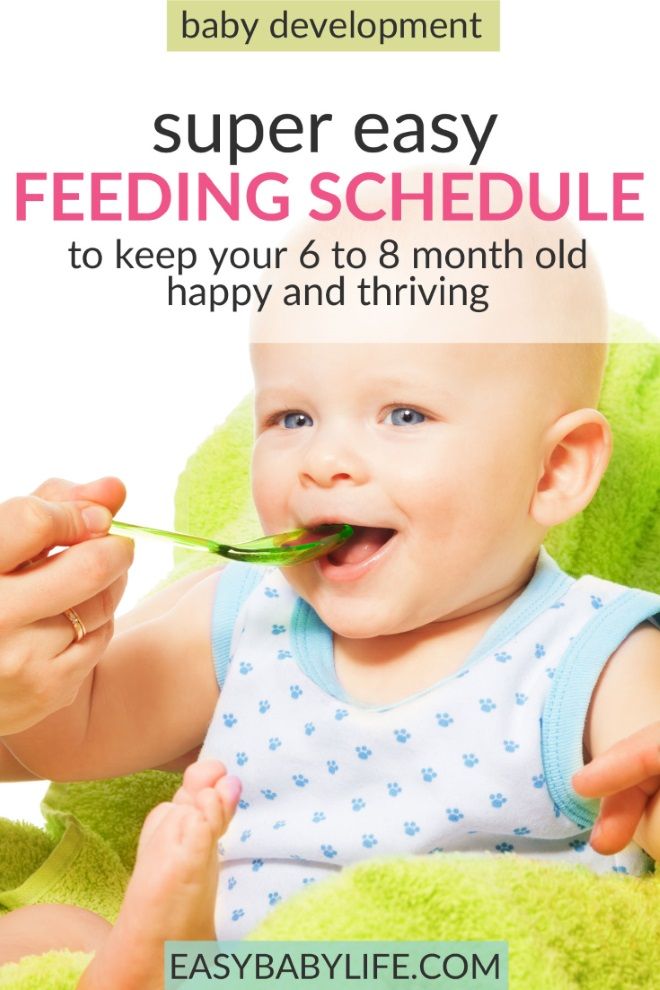 (I don’t look for James to consume much here and don’t offer baby food, but I like him sitting with us and “snacking” a little so that he can get used to the schedule he ultimately will have.)
(I don’t look for James to consume much here and don’t offer baby food, but I like him sitting with us and “snacking” a little so that he can get used to the schedule he ultimately will have.)
1:00-2:00 PM: Nap
4:00-4:30 PM: Breastfed/Bottle
5:30-6:00 PM: Dinner – Water available in a sippy cup, about 1/4 cup of various homemade/store bought baby food, and a meltable crunchy food like these wafers and/or soft cubed foods (see note below).
7:00-7:30 PM: Breastfed/Bottle
7:30-8:00 PM: Sleeping for the night
Where to Feed Your 6 and 7 Months Old
My son is sitting in a Tripp Trapp chair, which I love because he’s pulled up to the table eating with the rest of us without a tray. The majority of the time it works out that he is able to eat at the same time as the rest of us.
However, the Tripp Trapp is an investment, a more budget friendly high chair is this one from Ikea, but be sure to add a foot rest for stability so that baby is in a good position to eat well. Check out why seating positioning matters when it comes to eating with this article.
Check out why seating positioning matters when it comes to eating with this article.
How to Give 6 and 7 Month Olds Water to Drink
Most babies will be drinking water during their meal from a sippy cup until around 9 months. This is one of my favorite sippy cups to start with.
James started drinking from a sippy around 7 months old, and at that time, I switched him to a straw cup at meals (learning to drink from a straw at this age is very early though, most babies learn around 9 months old).
A sippy cup is perfectly appropriate for this age, but look for your baby to be using a straw by one year old. When you’re ready, learn how to teach your child to drink from a straw here.
Now is also a great time to begin offering small sips of water from an open cup- with your help, of course, unless you want mealtime and bath time to happen at the same time. Here is an open cup you can try that is perfect for small hands.
When to Feed Your 6-7 Month Old
You will see that many people recommend 1-2 feedings a day at this age, and that is totally fine. While there were a few times we couldn’t squeeze in two meals on a busy day, I made it a priority to do two meals a day from the time he turned 6 months.
While there were a few times we couldn’t squeeze in two meals on a busy day, I made it a priority to do two meals a day from the time he turned 6 months.
This consistent exposure was very beneficial, and I think is best for most babies. It can seem like a pain at times, but it is worth it if you can make it work.
As mentioned above, if your baby prefers many small breastfeeding sessions a day, that is okay and this schedule can still work for you.
Try to focus your schedule and routine around opportunities for baby to join you for meals at the table with solids and water in a cup, not so much on when they are nursing or taking a bottle.
The goal over time is to offer meals and snacks in a predictable consistent routine. You know your baby best, so definitely continue to breastfeed flexibly at 6 and 7 months, and use this guide to help make it work for your unique situation.
Take note of how well your baby eats in relation to how tired he is, how much time he has had to play, and when he had his last milk feeding.
You may want to adjust your times based on his hunger cues and energy levels. Even adjusting times by 10 or 15 minutes can make a big difference on how much your baby wants to engage with food at meals!
Set your expectations low, and focus on a pleasant experience during meals, not volume of food. It is completely normal to have a meal where your baby only has a few bites. This is NOT his main source of nutrition right now.
6 – 7 Month Feeding Schedule Tips
Babies learn so much about eating by watching us, and has been wonderful to watch how he loves being part of this family time, even at such a young age.
He gets excited to come to the table when everyone is there and will actually fuss if he sees everyone at the table without him!
In the 6 month eating schedule above you read to include “meltable crunchy” foods. Wondering what those are? They’re all of those first table foods you find in the baby food aisle like Biter Biscuits, Puffs, Rice Husks,buttery soft Crackers, etc.
A good rule of thumb is seeing if the food easily breaks down when wet or crushed. In the beginning of the 6th month, you are going to just let them mouth on some of these meltable crunchy foods, and help them put small pieces into their mouth.
Watch them closely, but keep in mind some gagging is normal. If this feels too soon for you to introduce “real” foods, you can wait 1-2 months, but want to begin around 8 months.
By the end of the 7th month, they will likely be feeding themselves some easy to pick up pieces of the dry food and chewing them a variety of these well.
Once they are eating these well, they can begin to have soft pieces of foods cut into cubes like ripe bananas, cooked zucchini, and banana bread. Anything that is very easily mashed between your finger and thumb is likely safe for baby to eat by this stage, even without teeth.
See my post on transitioning your baby to table foods for more details.
As your baby eats it’s important to allow them to get messy.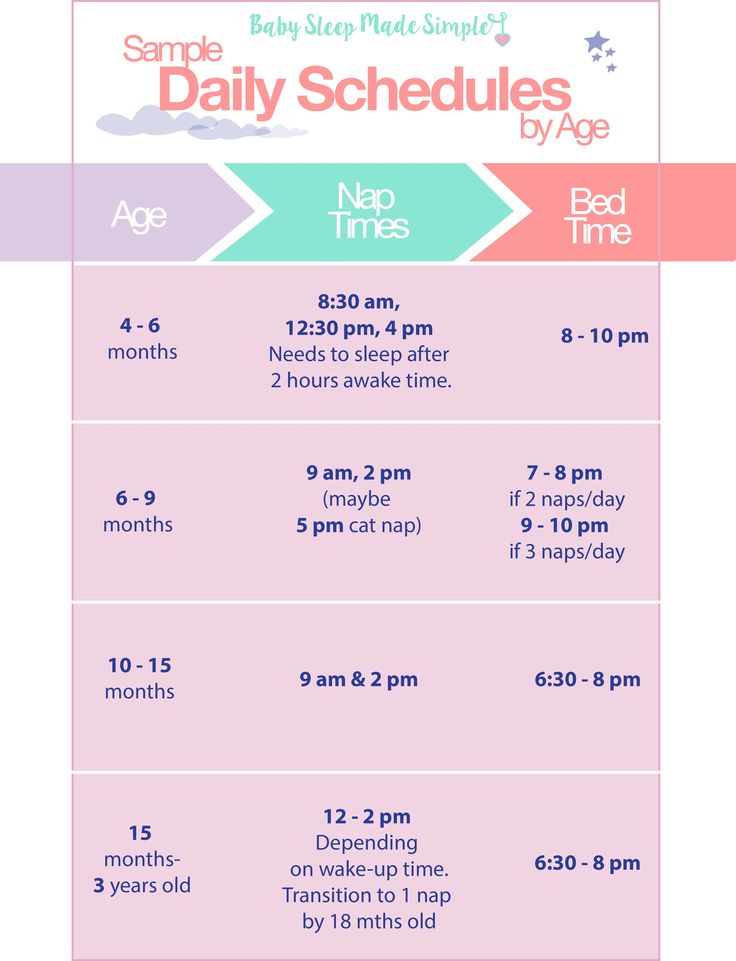 Don’t worry about wiping their face off until they’re finished eating. Strip your baby down to his diaper or plan a bath for after meals. See more on why it’s important for babies to get messy!
Don’t worry about wiping their face off until they’re finished eating. Strip your baby down to his diaper or plan a bath for after meals. See more on why it’s important for babies to get messy!
While this is a time to just explore foods, if your baby is underweight and you’re trying to beef up the calories you’re giving them, then check out these high calorie baby food combinations and some extra tips to maximize what your baby is eating.
These months are very important for establishing good eating skills, and can go a long way in how your child eats throughout childhood. This feeding schedule for 6 and 7 month olds, and all the tips you’ve read are a fantastic foundation for continued happy eating.
However, if your baby is stressed at mealtimes or is rarely consuming any food during meals by the end of the 7th month, then I would discuss your concerns with your doctor, and consider setting up a feeding evaluation through early intervention (free if you are in the states) or with an occupational therapist or speech therapist through feeding therapy.
Don’t panic if you see some of these challenges with eating, it’s more common than you think.
Some babies just need a little extra help, and that help can make a world of difference and really ward off major picky eating problems in the future.
You can also check out Feeding Red Flags, which will help you pinpoint if there’s a problem, or if your baby is gagging a lot, head to the baby gagging guide for tips on moving past it.
Get a PDF of the 6 Month Feeding Schedule!
Want a printable of this schedule? You got it… just click here and you can download and print this schedule for a quick reference.
More Baby Feeding Schedules and Tips
Feeding Schedule for 8, 9, and 10 Month Olds
Feeding Schedule for 11-14 Month Olds
Mega List of Table Foods for Your Baby
Teach Your Child to Self Feed
Did you pin this?
You’re going to want to save this, you can get to all the other feeding schedules here as your baby continues to grow!
Alisha Grogan is a licensed occupational therapist and founder of Your Kid’s Table. She has over 18 years experience with expertise in sensory processing and feeding development in babies, toddlers, and children. Alisha also has 3 boys of her own at home. Learn more about her here.
She has over 18 years experience with expertise in sensory processing and feeding development in babies, toddlers, and children. Alisha also has 3 boys of her own at home. Learn more about her here.
diet for a 6-month-old baby with breast and artificial feeding, an approximate menu for a week in the table, a diet for a day
Published: 02/10/2021
Reading time: 4 min.
Number of reads: 193721
Author of the article: Ponomareva Yuliya Vladimirovna
Pediatrician, candidate of medical sciences, allergist-immunologist
Changes in a child in the first year of life are very rapid, and each month is not like another. The 6-month milestone is very important, it is largely evaluative and transitional. By this age, most babies have doubled their birth weight, are about 15 cm tall, and some babies have already erupted their teeth. The age of 6 months is also transitional in terms of nutrition. Breast milk or an adapted formula is still the basis of the diet, but with the beginning of the second half of life, all children, without exception, should begin to receive complementary foods. Despite the general graph of growth and weight gain and indicators of psychomotor development, the status and diet of children at 6 months can be very different.
Breast milk or an adapted formula is still the basis of the diet, but with the beginning of the second half of life, all children, without exception, should begin to receive complementary foods. Despite the general graph of growth and weight gain and indicators of psychomotor development, the status and diet of children at 6 months can be very different.
Content: Hide
- The first feeding of 6 months
- The start of complementary foods at 4-5 months
- The second half of the life
- for a week for a child at 6 months
The first feeding of
If the baby is healthy and breastfed, and his mother eats a full and varied diet, exclusive breastfeeding is possible until this age. Cereal complementary foods in this case are preferable to start. This is due to the high energy and nutritional value of cereals, the ability to significantly enrich the baby's diet with a delayed start of the introduction of complementary foods.
However, the rate of expansion of the child's diet in this situation will be accelerated. Before the 8th month of life, it is necessary to introduce all basic food groups into the baby’s menu, since in the second half of the year the need for additional intake of nutrients and micronutrients is very high. Another reason explaining the importance of the rapid introduction of complementary foods is the formation of immunity of the immune cells of the intestine to ordinary food. If a child is introduced to these foods at the age of 4-8 months, the risk of developing food allergies has been proven to be reduced.
Complementary feeding starts at 4-5 months
In today's life, the nutrition of a nursing mother, unfortunately, is not always complete. Therefore, for most breastfed babies, complementary foods already need to be introduced from 5 months in order to prevent deficient conditions.
If a child is bottle-fed, then by the 4th month of life, the baby will not have enough adapted formula alone, and in this group of children, the timing of the introduction of complementary foods usually shifts a month earlier than in breast-fed babies. Accordingly, by 6 months, children will have vegetable puree and gluten-free porridge (buckwheat, corn and rice) in their diet. In the first half of life, monocomponent meals are used (that is, from one type of grain and vegetables), prepared on the basis of water, breast milk or an adapted mixture.
Accordingly, by 6 months, children will have vegetable puree and gluten-free porridge (buckwheat, corn and rice) in their diet. In the first half of life, monocomponent meals are used (that is, from one type of grain and vegetables), prepared on the basis of water, breast milk or an adapted mixture.
Fruit puree and juice can be another possible complementary food for children under 6 months of age without allergy symptoms. In a child with a risk of developing or manifesting allergies, the timing of the introduction of fruit complementary foods is shifted to the 8th month.
Second six months of life
Children over 6 months of age can supplement their diet with cereals containing gluten. First of all, these are oatmeal and wheat porridge, and then multi-cereal dishes with the addition of other cereals (millet, barley, rye). If the child does not have any manifestations of allergies, milk porridge can be included in the menu at this age. Bebi Premium industrial baby food products include specially prepared milk that is safe to use in healthy babies in the first year of life.
From the age of 6 months, the baby's diet is expanded with such important products as meat and cottage cheese. These products are a source of high-quality protein, fats, and are also rich in minerals such as iron, calcium, and phosphorus. Pediatricians and nutritionists recommend introducing meat and cottage cheese as part of combined dishes based on a fruit and vegetable and / or grain component in a ratio of 1 (cottage cheese / meat): 4–5 (fruits / vegetables / cereals).
To enrich the diet with polyunsaturated fatty acids in the second half of the year, the menu includes vegetable oil in the amount of 3–5 grams per day, which can be added to the complementary food dish. The volume of each feeding is approximately 150-170 ml, and the child can already stand up to 3.5 hours between meals.
In the table below, we offer a menu of 6 months for a week for a child who started receiving complementary foods at the age of 4-5 months, and by the time the second half of life begins, dairy-free gluten-free cereals, vegetable and fruit purees have already been introduced into his diet.
1st day
| Seeing | 0065 50|||
| Lunch (12.30) | vegetable soup with beef, olive oil | 100/30/3 | compot of drocked 9006, 9006 9 |
| Afternoon snack (16.00) | Plum puree with cottage cheese | 60/40 | |
| Breast milk/formula | 60 062 | ||
| food reception | menu | ml/g | |
| Early morning | breast milk/mixture | 150 | Milki | & Bashas Breakfast (09 cherry Bebi Premium» | 100 |
| 0065 Breast milk/mixture | 150 | ||
| children's soluble cookies "BEBIKI" Classic | |||
| GRUSHERS with rice and Claus | GRUSHIOUS WITH RISE and CRETURE 30 | ||
| Bebi Premium Kids Instant Herbal Tea | 50 | ||
| Bedtime 065 Breast milk/formula | 150 | ||
Rate the article
(Number of votes: 20, average 4. 8)
8)
Share with friends:
Diet for a 4-6 month old baby
Your baby is already 4 months old. He has noticeably grown up, become more active, is interested in objects that fall into his field of vision, carefully examines and reaches for them. The emotional reactions of the child have become much richer: he joyfully smiles at all the people whom he often sees more and more often, makes various sounds.
You are still breastfeeding or have had to switch to formula or formula feeding. The child is actively growing, and only with breast milk or infant formula, he can no longer always get all the necessary nutrients. And that means it's time to think about complementary foods.
The optimal time to start its introduction is between 4 and 6 months, regardless of whether the baby is receiving breast milk or formula. This is the time when children respond best to new foods. Up to 4 months, the child is not yet ready to perceive and digest any other food. And with the late introduction of complementary foods - after 6 months, children already have significant deficiencies of individual nutrients and, first of all, micronutrients (minerals, vitamins, long-chain polyunsaturated fatty acids, etc.). In addition, toddlers at this age often refuse new foods, they have delayed development of chewing skills for thick foods, and inadequate eating habits are formed. It is important to know that, no matter how strange it may seem at first glance, with a delayed appointment of complementary foods, allergic reactions more often occur on them.
And with the late introduction of complementary foods - after 6 months, children already have significant deficiencies of individual nutrients and, first of all, micronutrients (minerals, vitamins, long-chain polyunsaturated fatty acids, etc.). In addition, toddlers at this age often refuse new foods, they have delayed development of chewing skills for thick foods, and inadequate eating habits are formed. It is important to know that, no matter how strange it may seem at first glance, with a delayed appointment of complementary foods, allergic reactions more often occur on them.
When is it advisable to introduce complementary foods as early as 4 months, and when can you wait until 5.5 or even 6 months? To resolve this issue, be sure to consult a pediatrician.
As a rule, at an earlier age (4 - 4.5 months), complementary foods are introduced to children at risk of developing iron deficiency anemia, as well as children with insufficient weight gain and with functional digestive disorders.
The optimal time to start complementary foods for a healthy baby is between 5 and 5.5 months of age.
The World Health Organization recommends that breastfed babies should be introduced to complementary foods from 6 months of age. From the point of view of domestic pediatricians, which is based on extensive practical experience and scientific research, this is possible only in cases where the child was born on time, without malnutrition (since in these cases the mineral reserves are very small), he is healthy, grows well and develops. In addition, the mother should also be healthy, eat well and use either specialized enriched foods for pregnant and lactating women, or vitamin and mineral complexes in courses. Such restrictions are associated with the depletion of iron stores even in a completely healthy child by 5-5.5 months of age and a significant increase in the risk of anemia in the absence of complementary foods rich or fortified with iron. There are other deficits as well.
The first complementary food can be vegetable puree or porridge, fruit puree is better to give the baby later - after tasty sweet fruits, children usually eat vegetable puree and cereals worse, often refuse them altogether.
Where is the best place to start? In cases where the child has a tendency to constipation or he puts on weight too quickly, preference should be given to vegetables. With a high probability of developing anemia, unstable stools and small weight gains - from baby cereals enriched with micronutrients. And if you started introducing complementary foods with cereals, then the second product will be vegetables and vice versa.
If the first complementary food is introduced at 6 months, it must be baby porridge enriched with iron and other minerals and vitamins, the intake of which with breast milk is no longer enough.
Another important complementary food product is mashed meat. It contains iron, which is easily absorbed. And adding meat to vegetables improves the absorption of iron from them. It is advisable to introduce meat puree to a child at the age of 6 months. Only the daily use of children's enriched porridge and meat puree can satisfy the needs of babies in iron, zinc and other micronutrients.
It is advisable to introduce meat puree to a child at the age of 6 months. Only the daily use of children's enriched porridge and meat puree can satisfy the needs of babies in iron, zinc and other micronutrients.
But it is better to introduce juices later, when the child already receives the main complementary foods - vegetables, cereals, meat and fruits. After all, complementary foods are needed so that the baby receives all the substances necessary for growth and development, and there are very few in their juices, including vitamins and minerals.
Juices should not be given between feedings, but after the child has eaten porridge or vegetables with meat puree, as well as for an afternoon snack. The habit of drinking juice between meals leads to frequent snacking in the future, a love of sweets is instilled, children have more tooth decay and an increased risk of obesity.
With the start of the introduction of complementary foods, the child is gradually transferred to a 5-time feeding regimen.
Rules for the introduction of complementary foods:
- preference should be given to baby products of industrial production, they are made from environmentally friendly raw materials, have a guaranteed composition and degree of grinding
- Complementary foods should be offered to the baby by spoon at the start of feeding, before breastfeeding (formula feeding)
- the volume of the product increases gradually, starting with ½ - 1 spoon, and in 7 - 10 days we bring it to the age norm, subsequent products within the same group (cereals from other cereals or new vegetables)
- can be entered faster, in 5 - 7 days
- start introduction with monocomponent products
- it is undesirable to give a new product in the afternoon, it is important to follow how the child reacts to it
- new products are not introduced in the event of acute illnesses, and before and immediately after prophylactic vaccination (should be abstained for several days)
When introducing a new type of complementary food, first try one product, gradually increasing its amount, and then gradually "dilute" this product with a new one.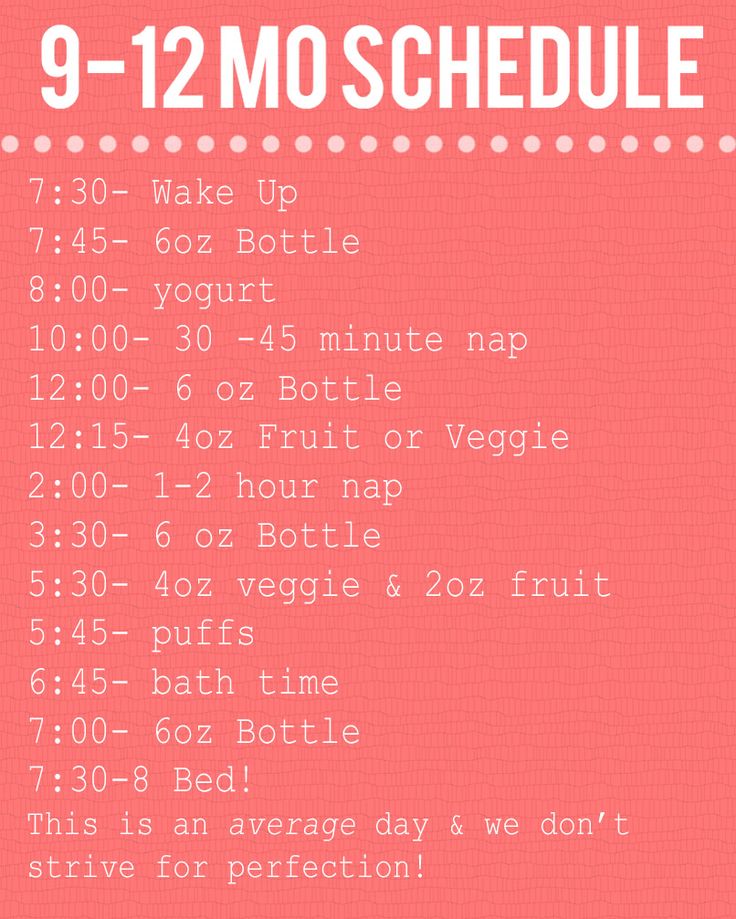 For example, vegetable complementary foods can be started with a teaspoon of zucchini puree. During the week, give the baby only this product, gradually increasing its volume. After a week, add a teaspoon of mashed broccoli or cauliflower to the zucchini puree and continue to increase the total volume every day. Vegetable puree from three types of vegetables will be optimal. The portion should correspond to the age norm. Over time, you can replace the introduced vegetables with others faster.
For example, vegetable complementary foods can be started with a teaspoon of zucchini puree. During the week, give the baby only this product, gradually increasing its volume. After a week, add a teaspoon of mashed broccoli or cauliflower to the zucchini puree and continue to increase the total volume every day. Vegetable puree from three types of vegetables will be optimal. The portion should correspond to the age norm. Over time, you can replace the introduced vegetables with others faster.
After the introduction of one vegetable (bringing its volume to the required amount), you can proceed to the intake of porridge, and diversify the vegetable diet later.
If the child did not like the dish, for example, broccoli, do not give up and continue to offer this vegetable in a small amount - 1-2 spoons daily, you can not even once, but 2-3 times before meals, and after 7 - 10, and sometimes 15 days, the baby will get used to the new taste. This diversifies the diet, will help to form the right taste habits in the baby.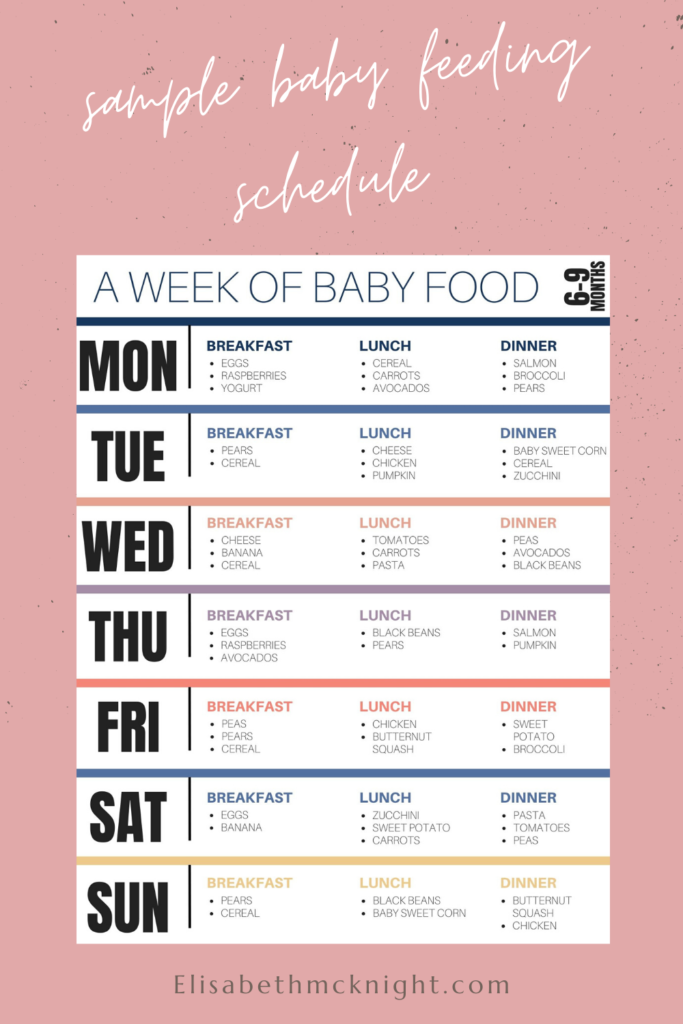
Spoon-feeding should be done with patience and care. Forced feeding is unacceptable!
In the diet of healthy children, porridge is usually introduced after vegetables (with the exception of healthy breastfed children, when complementary foods are introduced from 6 months). It is better to start with dairy-free gluten-free cereals - buckwheat, corn, rice. At the same time, it is important to use porridge for baby food of industrial production, which contains a complex of vitamins and minerals. In addition, it is already ready for use, you just need to dilute it with breast milk or the mixture that the baby receives.
Children suffering from food allergies are introduced complementary foods at 5-5.5 months. The rules for the introduction of products are the same as for healthy children, in all cases it is introduced slowly and begins with hypoallergenic products. Be sure to take into account individual tolerance. The difference is only in the correction of the diet, taking into account the identified allergens. From meat products, preference should first be given to mashed turkey and rabbit.
Diets for different age periods
Explain how you can make a diet, it is better to use a few examples that will help you navigate in compiling a menu specifically for your child.
From 5 months, the volume of one feeding is on average 200 ml.
Option 1.
If your baby started receiving complementary foods from 4-5 months, then at 6 months his diet should look like this:
| Breast milk or VHI* | 200 ml | |
| II feeding 10 hours | Dairy-free porridge** Supplementation with breast milk or VHI* | 150 g 50 ml |
| III feeding 14 hours | Vegetable puree Meat puree Vegetable oil Supplemental breast milk or VHI* | 150 g 5 - 30 g 1 tsp 30 ml |
| IV feeding 18 hours | Fruit puree Breast milk or VHI* | 60 g 140 ml |
| V feeding 22 hours | Breast milk or VHI* | 200 ml |
* - infant formula
** - diluted with breast milk or VHI
Option 2.
* - infant formula Option 3. : ** - diluted with breast milk Up to 7 months, increase the volume of porridge and vegetable puree to 150 g and introduce fruit puree. I feeding
6 hours Breast milk or VHI* 200 ml II feeding
10 hours Dairy-free porridge**
Fruit puree 150 g
20 g III feeding
14 hours Vegetable puree
Meat puree Vegetable oil
Fruit juice 150 g
5 - 30 g
1 tsp
60 ml IV feeding
18 hours Fruit puree
Breast milk or VHI* 40 g
140 ml V feeding
22 hours Breast milk or VHI* 200 ml
** - diluted with breast milk or VHI 
I feeding
6 hours Breast milk II feeding
10 hours Dairy-free porridge**
Breast milk supplement 100 g III feeding
14 hours Vegetable puree
Meat puree Vegetable oil
Breast milk supplement 100 g
5 - 30 g
1 tsp IV feeding
18 hours Breast milk V feeding
22 hours Breast milk 

